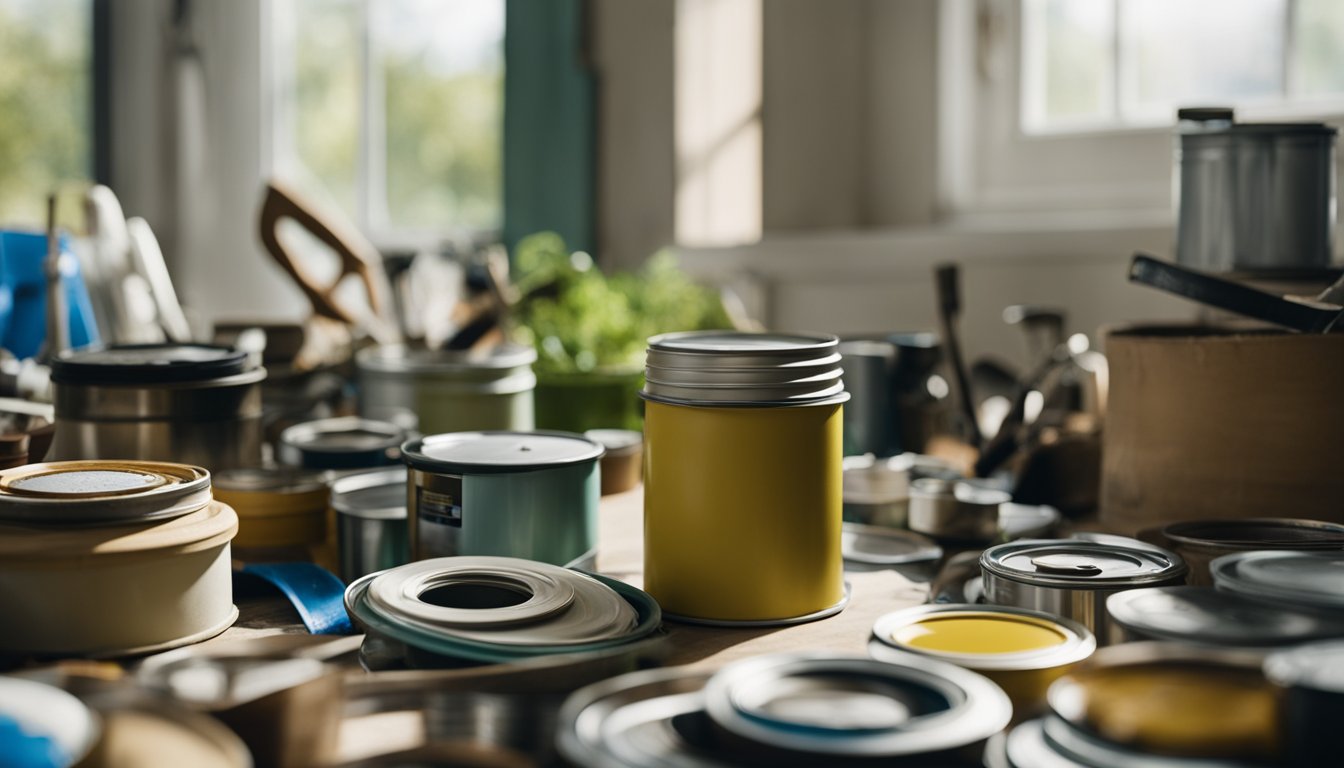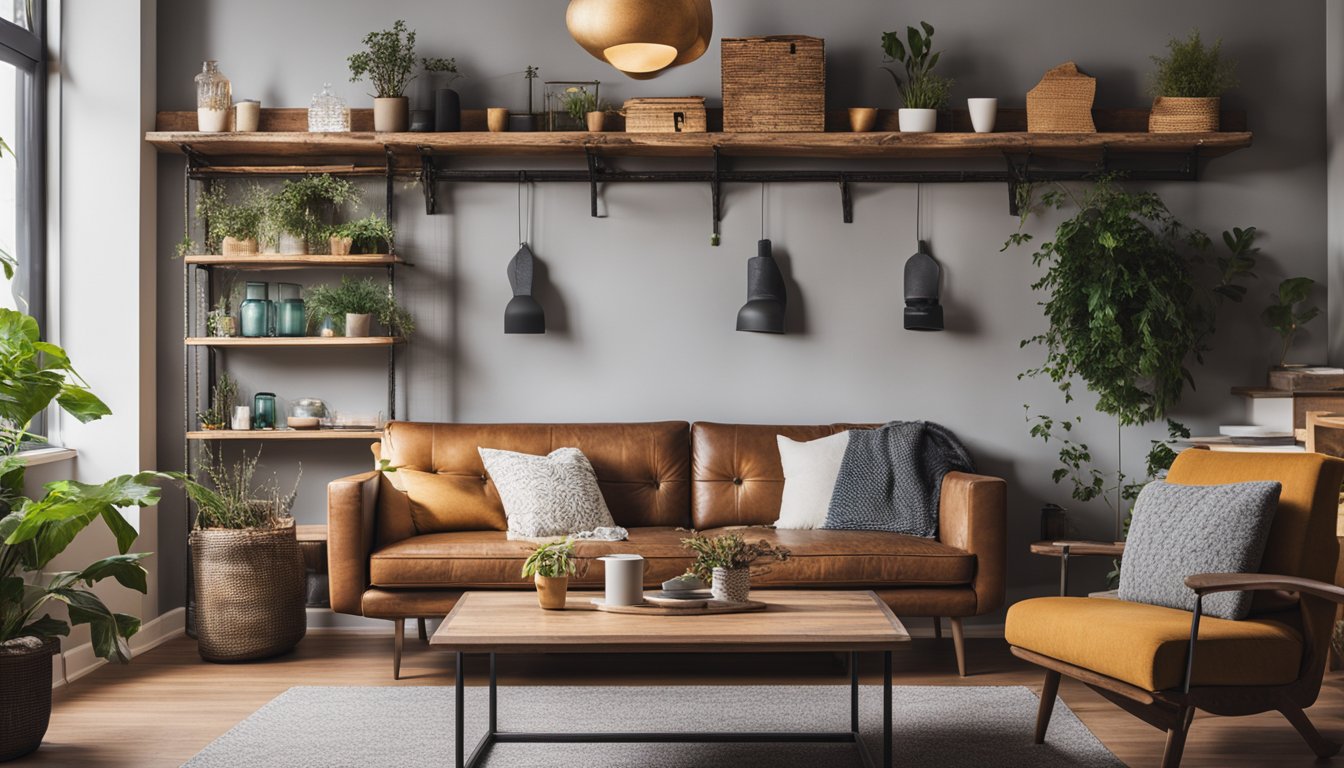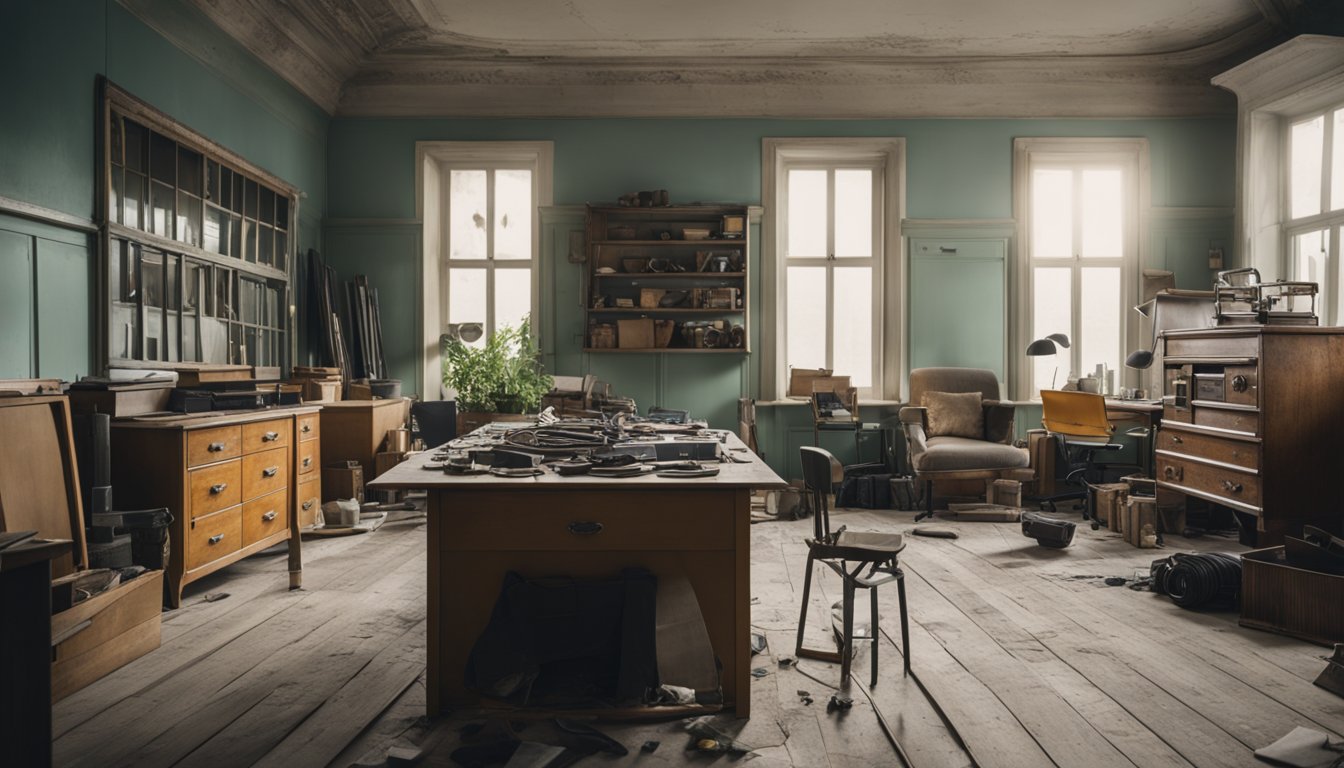Late updated: 16 Apr 2025 12:04
Written by: Daniel Harper
Creative Techniques for Upcycling in Small Home Renovations: Transform Your Space
Transforming your home with upcycling not only makes interior design more affordable but also promotes sustainability. By creatively repurposing old items, we can give them new life and add unique touches to our living spaces. Whether it's turning an old ladder into chic bookshelves or crafting a rustic coffee table from pallets, the possibilities are endless.

As we embark on small home renovations, embracing upcycling techniques can minimise waste and reduce environmental impact. From repurposing cast-offs to incorporating unexpected materials into home decor, these strategies breathe fresh life into tired spaces and items. Our journey through this innovative process involves planning and executing projects that align with our aesthetic goals, while also answering common queries to ensure a smooth renovation experience.
Intrigued by the potential of your creative endeavours, you'll discover the satisfaction in watching old objects transform. Join us as we explore the exciting realm of upcycling within our home improvement adventures, highlighting some of the most practical techniques we've encountered.
Key Takeaways
- Upcycling minimises waste while adding unique design features.
- Affordable projects breathe new life into old items.
- Planning and execution are crucial for successful transformations.
Planning Your Upcycling Projects

In small home renovations, careful planning is essential for maximising potential while minimising costs. Utilising upcycled materials not only reduces waste but also breathes new life into spaces.
Assessing Materials and Spaces for Upcycling Potential
Let's identify potential in what we already own. Begin by examining your home for items that could be repurposed. Old furniture, frames, and containers often have untapped potential. Consider not just the look but the structural integrity of these materials. Cracked wood could find new life as a rustic wall shelf; worn fabric might transform into cushions or curtains.
It's crucial to evaluate spaces that would benefit from an update. Areas like entryways, kitchens, and living rooms present numerous opportunities for incorporating upcycled pieces. Take note of dimensions and colour schemes to ensure newly created pieces blend seamlessly. With a keen eye for detail, we turn unused spaces and forgotten items into charming, functional elements of our living space.
Budget-Friendly Strategies for Home Renovations
Budgeting is key in small home projects. Begin by determining how much can be allocated to upcycling. Crafting a list of must-have items ensures that we stay on track. Reaching out to local second-hand shops or online marketplaces offers budget-friendly materials. Sometimes, neighbours or community groups may also give away items for free.
Consider planning DIY projects. Repurposing strategies tend to be wallet-friendly when we put our own creativity to work. Simple projects like repainting old chairs or converting pallets into planters save money while providing a customised aesthetic. We can also explore creative inspiration from online platforms and home decor magazines, offering fresh ideas that stretch a limited budget further than expected.
Executing Upcycling Techniques for Renovation

We can creatively transform small home spaces by upcycling old materials and furnishings. Our techniques focus on repurposing furniture, enhancing home office productivity, organising storage, selecting sustainable flooring, and incorporating energy-efficient fixtures. These approaches contribute to both aesthetic appeal and functionality.
Creative Repurposing of Furniture
When faced with outdated or unused furniture, let's consider the endless possibilities of upcycling. A worn-out table can be reimagined as a stylish kitchen island by adding a fresh coat of paint and wheels for mobility.
A vintage ladder might serve as an innovative bookshelf or towel rack. Repurposing not only saves resources but adds unique charm to any room.
Experimenting with combinations of furniture items amplified by modern touches such as metallic paints, can breathe new life into spaces. The key is to focus on functionality and aesthetics, ensuring every piece has a purpose in the room.
Upcycling for Enhanced Home Office Productivity
Creating an efficient home office demands innovative use of space and materials. Repurposed desks, created from old doors or tabletops, can form the foundation of a productive workspace.
Add shelves made from reclaimed wood for book storage, while using vintage crates as drawer units to reduce clutter. Lighting is crucial—consider recycling old lamps with energy-efficient bulbs to reduce energy consumption.
Incorporating a recycled corkboard or blackboard encourages organisation and boosts productivity.
Storage and Organisation Solutions
Efficient storage solutions are paramount in small home renovations. We can create stylish organisers using recycled boxes or cans, adorned with paint or fabric remnants.
Mount old drawers on walls for unique shelving options. Storage doesn't have to be hidden; it can be an integral part of our décor.
Think of vintage suitcases stacked as a bedside table or coffee table, offering both style and storage. These creative uses of space help minimise clutter and maintain an orderly home environment.
Sustainable Flooring and Tiling Options
Choosing eco-friendly flooring and tiling options elevates our commitment to sustainability. Reclaimed wood flooring provides warmth and character, while reducing the need for new resources.
For a modern touch, consider using recycled glass tiles in kitchens or bathrooms, which offer a variety of hues and textures. Rubber flooring, made from recycled tyres, is another durable option, perfect for high-traffic areas.
Such materials not only help the environment but also provide a unique aesthetic appeal.
Energy-Efficient Fixtures for Utility Spaces
Improving energy efficiency can start with our utility areas. Upgrading fixtures in laundry rooms or kitchens with recycled materials ensures reduced energy usage and a modern look.
A reclaimed wood countertop can enhance the aesthetic of a laundry area, supporting new, energy-efficient appliances like washers and dryers.
Incorporating vintage or second-hand sinks and plumbing fixtures brings an elegant touch while promoting recycling. By integrating energy-efficient lighting and materials, we significantly reduce the carbon footprint of our utility spaces.
Frequently Asked Questions

Incorporating upcycling into small home renovations enhances aesthetics and promotes sustainability. By using creative and practical methods, we can transform old items into functional and decorative pieces, all while making environmentally-friendly choices.
How can one integrate upcycling into small-scale home renovation projects?
We can incorporate upcycling into home renovations by identifying reusable items that align with the new design. Planning is essential: assess existing materials and envision their potential new roles. Items like old shelves or wooden pallets can be revitalised to fit a refreshed interior.
What are some beginner-friendly upcycling techniques for enhancing one's home?
For beginners, starting with simple projects like repainting furniture or converting jars into storage containers can build confidence. Using easily accessible tools and materials helps to keep tasks manageable. Such projects provide a solid foundation in upcycling without overwhelming complexity.
In what ways can old items be creatively repurposed for home decor?
Creativity shines when old items are transformed into unique decorative pieces. For instance, vintage fabric can be used to craft cushion covers, and glass bottles make striking vases or lamps. Incorporating these elements adds character and a personal touch to any space.
Could you suggest some practical upcycled items that can be created for everyday use in the home?
Practical upcycled creations include turning wooden crates into bookshelves or assembling tin cans into wall planters. Also, repurposing sturdy fabrics into reusable shopping bags can be both functional and sustainable. These items cater to everyday needs and add value to household routines.
What aspects should be considered when choosing materials for upcycling in home renovations?
Selecting materials for upcycling requires a focus on durability and adaptability. We must consider items that can withstand their intended new use. Safety is also crucial; ensure the materials are non-toxic and suitable for indoor use, ensuring they complement existing home aesthetics.
How does upcycling contribute to sustainability in home renovation practices?
Upcycling plays a vital role in sustainability by minimising waste and reducing the need for new products. It extends the life of materials, effectively conserving resources. By embracing upcycling, we reduce our carbon footprint and foster an eco-friendly approach to home improvements.
